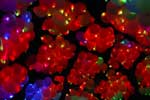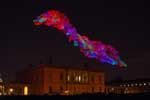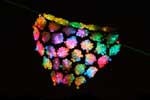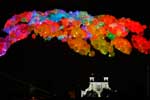 |
|
 |
|
 |
|
 |
|
 |
|
|
|
 |
|
 |
|
|
|
|
  |
|
People often call me an artist. I do not mind this much, but I worry that those who do call themselves artists might look at my work and be slightly offended that my work should be included in the same category as their assuredly greater "works of art". On the other hand, when people call me an architect, strictly speaking, I must protest: in the UK, I cannot call myself an architect because, without final professional qualification, to do so could defraud potential clients. This dilemma is occurring more and more to those who studied architecture, practiced architecture and are now researching architecture. It arises because such practitioner-researchers are discovering new techniques for pushing their discipline, closely informed by the practice of new media art. In the eighties and nineties advanced theoretical work in architecture was carried out on paper, in model, in galleries, in books. Now, it is being carried out in interactive installations, in augmented reality, in networked performances. In some senses, most advanced architectural work is these days produced by non-architects. Technologists at research institutes are developing responsive systems that allow people to interface with their spaces, for example through projection walls, remote devices and 'intelligent' sensors. Property developers instigate technological development for different economic reasons, by increasing efficiency or decreasing costs in construction techniques. Artists pioneer new interface models and question distinctions between audiences and performers or designers and users. Even more so, it has been people operating within the constantly fluctuating territories of new media art who have had the best opportunities to challenge the boundaries of space design and, by extension, architectural design. They have explored the changing nature of the relationship of people to their environments, manifested in feasible, tangible, built projects. It is useful for research-based architects to tread the fine line between "architecture" and "art"; it is even more useful to evade the question of just what distinguishes the two because it allows them to take advantage of the best of both. Artists who work with technology are pioneering new creative research roles. Their processes are iterative, combining practice with research, design with implementation. Their strategies allow them to push both the boundaries of technology and the boundaries of art. Architects can learn from new media artists at a practical level in two particular areas. First, they can learn the strategy of actually building a project and testing it on real-world people. It has been too easy for architects to speculate on paper or in model "what might be" or "what could happen". Artists are never content to remain in the realm of the "possibility" (apart from a particular type of conceptual art; though even then the proposal becomes the artwork and can be evaluated as such). They can employ techniques of rapid prototyping or low-tech interface, the emphasis being on producing experiences at a 1:1 scale. They can adopt the conceptual approaches of artists by creating works that are socially inquisitive, that critique their own modes of production and that aspire to conversations with other similar projects; by creating works that are, in Matthew Fuller's words "not-just-art" [1]. Primarily, though, they can learn from artists who actually make their projects (as opposed to simply proposing them), which allows others to enter into them in order to critique them. In so doing, they also allow themselves the possibility of acute self-critique because the timescale in an "art" project is usually short enough that feedback from the final built form is close enough to the construction process to have an effect on the original proposal. Secondly, architects can learn from new media artists ways to implement their ideas through creative funding strategies. The usual mode of production for an architect wishing to pursue a particular conceptual agenda in physical built projects is to develop ideas in concert with a client. The problem in this course lies with needing to find a client first before developing fully a conceptual approach. While the challenges of compromising ideals with client requirements certainly makes the work more interesting it is most often frustrating for the architect not to be able to push the conceptual agenda as far as would be possible without such constraints. Artists, on the other hand, usually develop a project proposal first and then go out and seek appropriate funding for it, whether through an arts grant, a technology grant or commercial sponsorship. These days there are many such opportunities and for this reason one can find artists using their discipline as a creative research environment that complements cultural anthropology. Artists, particularly those collaborating with scientists, have
been able to push forward the conceptual territory of space use
in ways that would be impossible for traditional architects. Through
interface development they have explored what might be called
"softspace" technologies: systems that incorporate the
ephemeral qualities of architecture including smell, sound, light,
heat and electromagnetic fields. This approach has concentrated
on the interactions that make up the experience of space and has
proposed Another approach has been to investigate how people operate within such environments. Movements in art that challenge accepted dichotomies between audiences and performers have parallels in spatial investigations that challenge the distinctions beween architects and occupants or designers and users. These investigations propose new models for environmental design based on systems that welcome the active participation of people operating within those systems, informed by the ways that culture provides frameworks for social interaction. They have considered the notion of "user as designer" and have suggested choreographies and control structures that not only benefit from participants' contributions but actually require them. Such a role for architects is similar to that proposed by Steven
Groák in The Idea of Building, where he develops the concept
of "practitioner-researchers": "What is needed
now is a research paradigm, a framework of meaning and
practice which derives from
©2005 Usman Haque, |
